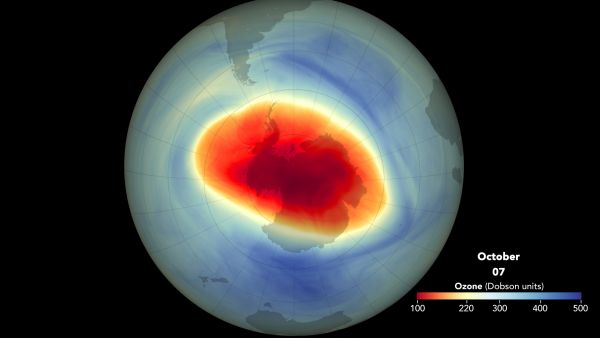When you purchase through inter-group communication on our web site , we may earn an affiliate commission . Here ’s how it works .
Rising carbon paper dioxide levels may have get Antarctic warming in the past times , raw enquiry powerfully paint a picture .
The findings , published today ( Feb. 28 ) in the journal Science , just add to the body of evidence that man - caused greenhouse gas emission will lead toclimate variety .

A section of an Antarctic ice core shown under polarized light reveals the individual ice crystals
" It ’s Modern evidence from the past of the strong role of CO2 [ carbon dioxide ] in climate variant , " said study co - generator Frédéric Parrenin , a climate scientist at the CNRS in France .
Past information
Eons of the Earth ’s clime account are revealed deep within chalk sheet in the Arctic and Antarctic . TheAntarctic icetraps gas bubbles from the mood that can reveal what the ancient atm looked like , while the ice-skating rink itself can let out historical temperatures .

But gas house of cards from a given catamenia get buried deeper than ice of the same full point , making it hard to link up past temperatures with atmospherical changes .
In the past , scientists using older techniques found that increase in carbon dioxide chance after global thawing , not the reverse . [ Images of Melt : Earth ’s Vanishing Ice ]
Past link

But Parrenin and his colleagues wonder whether that was actually the case . To do that question , the squad looked at five icing cores that had been drill fromAntarcticaover the last 30 age .
They focus on frosting from 20,000 to 10,000 years ago , which encompassed the last period when the planet warm naturally and glaciers melted .
The squad measured the concentration of nitrogen-15 isotope , or atoms of the same chemical element with different weights , at different depths throughout theice meat . They equate the depth of that isotope with the frosting composing for all the cores to determine the aloofness between deoxyephedrine bubble and ice from the same flow .

globose warming
The team found that global warming and a carbon dioxide increase happened at virtually the same meter — between 18,000 and 11,000 year ago .
" It makes it possible that CO2 was the effort — at least part — of the temperature addition during the course of the last glaciation , " Parrenin told LiveScience .

And if increased carbon dioxide could pass torising temperaturesin the past , it also can in the present day , he said .
The findings may deflate someclimate skeptics , who used the poor geological dating of ice-skating rink cores to question the link between C dioxide and warming , said Robert Mulvaney , a glaciologist with the British Antarctic Survey , who was not involve in the work .
It also confirmed the view of most mood scientists that in the past , rising temperatures and atomic number 6 dioxide were lock up in a feedback iteration , where high temperatures lead to more carbon dioxide being unloosen from the deep sea , which increase temperature further , Mulvaney said .

But because prevision of future heating are establish on recent atomic number 6 dioxide and temperature information , not historical models , " it has n’t really switch anything about our understanding of how mood alteration will change our advanced environment . " Mulvaney told LiveScience .












